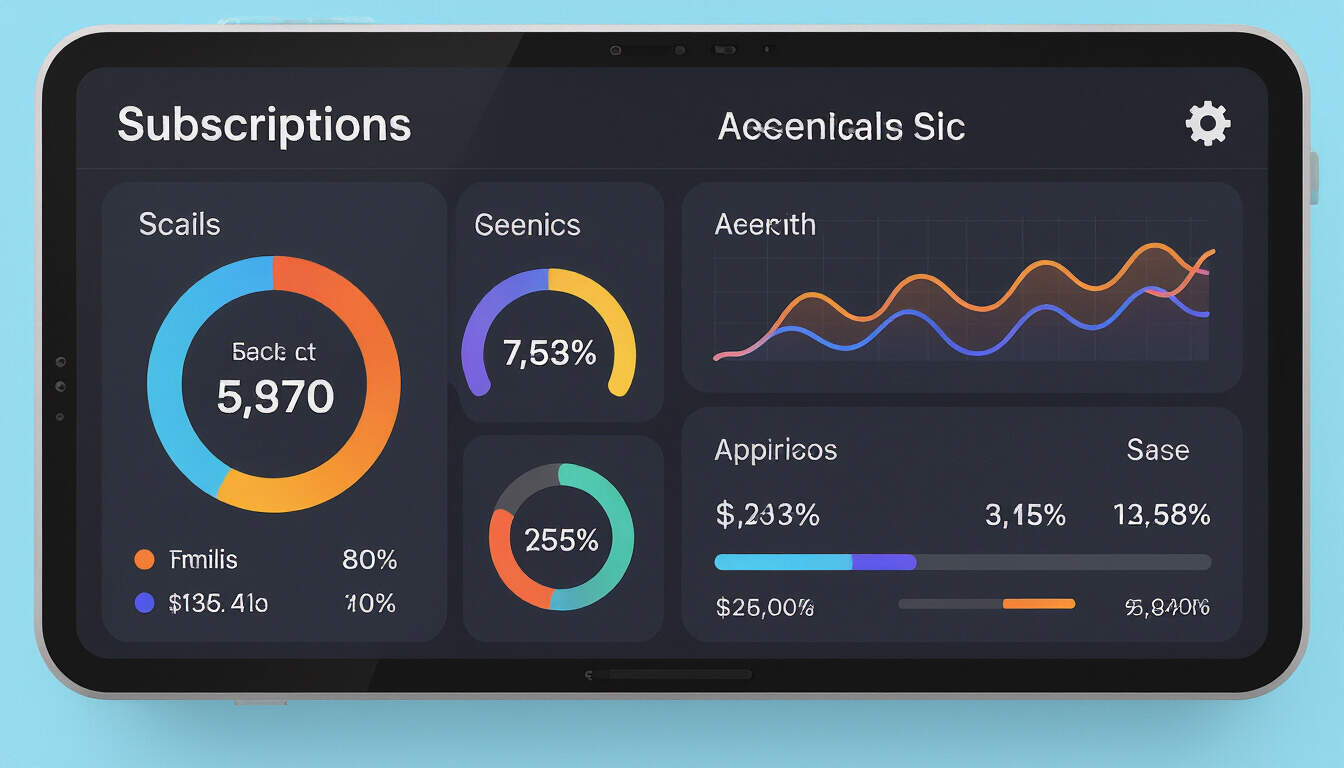Subscription Analytics Dashboards in Tiny Commerce Models
 by Max Miller
by Max Miller
Subscription analytics dashboards offer essential tools for tracking and optimizing small-scale subscription businesses. These platforms provide insights into customer behavior, revenue streams, and growth metrics, helping entrepreneurs make informed decisions to enhance their operations.

Subscription analytics dashboards are vital tools for businesses operating in tiny commerce models. They allow owners to monitor key performance indicators in real time. For instance, subscription analytics dashboards can display data on customer retention rates, which is crucial for maintaining steady income.
In the context of tiny commerce, these dashboards help identify trends that affect sales. Entrepreneurs can use them to track monthly recurring revenue and adjust strategies accordingly. One effective approach is integrating dashboards with existing e-commerce platforms to streamline data collection.
Focusing on practical applications, many small business owners rely on these tools to improve customer engagement. For example, dashboards might show patterns in subscription cancellations, enabling quick responses. This insight supports better product offerings and personalized services.
When building a dashboard setup, start by selecting features that align with business goals. Common elements include visual data representations and alert systems for anomalies. Tiny commerce models benefit from customizable interfaces that prioritize essential metrics without overwhelming users.
To implement these dashboards effectively, consider the following steps:
- Choose a user-friendly platform that fits your budget.
- Integrate it with your current systems for seamless data flow.
- Train your team on how to interpret the data accurately.
Regular reviews of dashboard reports can lead to actionable insights. For small e-commerce enthusiasts, understanding churn rates through these tools is key to long-term success. Churn rates indicate how many subscribers leave over a period, helping to refine marketing efforts.
Another aspect is analyzing revenue patterns. Dashboards often include filters for different time frames, making it easier to spot seasonal changes. This analysis aids in forecasting and resource allocation for tiny businesses.
Case in point, a small online store selling artisanal goods used a basic dashboard to track subscription sign-ups. By examining the data, they noticed a drop during certain months and introduced promotional offers, resulting in increased retention.
Beyond tracking, dashboards support overall business health. They provide metrics on acquisition costs and lifetime value of customers. For entrepreneurs in e-commerce, e-commerce analytics within these dashboards offer a competitive edge by highlighting areas for improvement.
Moving to advanced uses, some dashboards incorporate predictive analytics. This feature uses historical data to forecast future trends, which is particularly useful for tiny commerce models aiming for growth. However, ensure the predictions are based on reliable inputs to avoid errors.
In terms of security, protecting subscriber data is essential. Dashboards should include measures like encryption to safeguard information. This protects both the business and its customers from potential risks.
For optimal results, combine dashboard insights with other strategies. For example, use the data to inform content creation or inventory management. Small business owners often find that regular updates to their dashboards keep information current and relevant.
Finally, the value of these tools lies in their ability to drive decisions. By consistently reviewing subscription models, entrepreneurs can adapt to market shifts and sustain their operations. In essence, investing in a good dashboard is a step toward more efficient and profitable tiny commerce practices.
